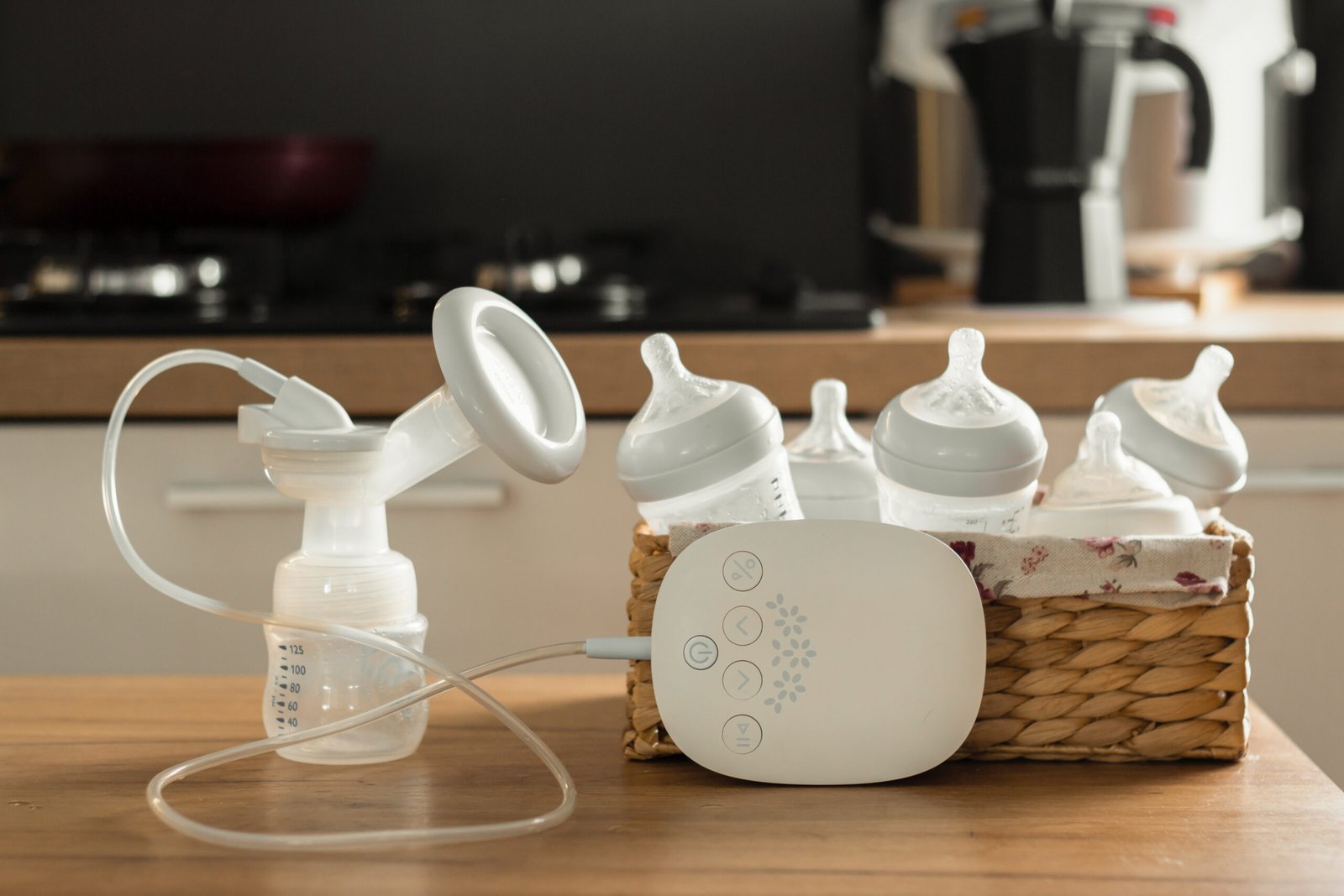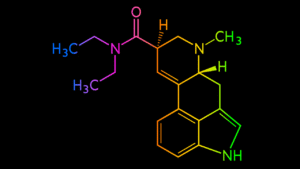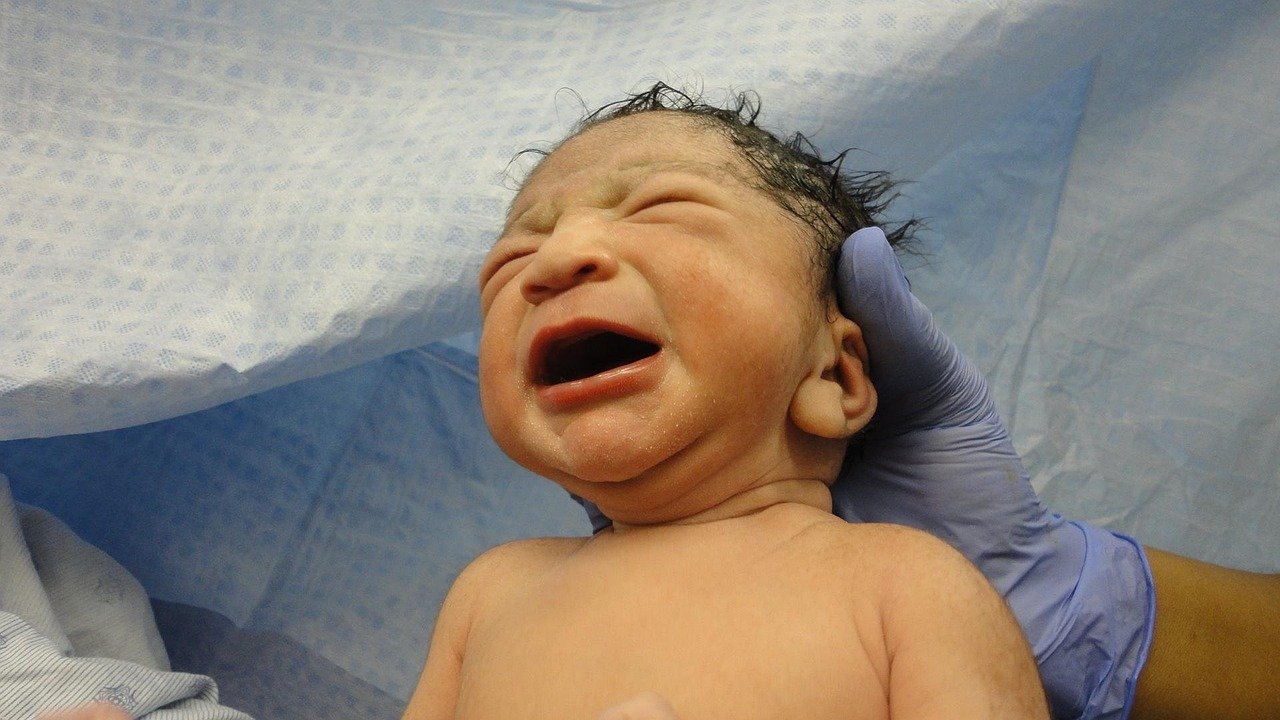Pregnancy and breastfeeding are critical periods when a woman’s body becomes more vulnerable to environmental influences, and certain substances can potentially affect both maternal health and fetal or infant development. This comprehensive guide outlines ingredients and substances that should be avoided or limited during pregnancy and breastfeeding, based on the latest research and recommendations from 2025.
Understanding the Risks
During pregnancy, the placenta serves as a connection between mother and baby, allowing nutrients to pass through but also potentially exposing the developing fetus to harmful substances. Similarly, during breastfeeding, certain chemicals can transfer from the mother’s bloodstream into breast milk. Because babies’ bodies are still developing critical systems‚ including brain, immune, and reproductive systems‚ they’re particularly vulnerable to the effects of toxins.
How Harmful Substances Reach the Baby
1. During Pregnancy:
– Substances can cross the placental barrier
– The fetus may be exposed to chemicals in the mother’s bloodstream
– Developing organs and systems are particularly sensitive to toxins
2. During Breastfeeding:
– Chemicals can transfer from maternal bloodstream to breast milk
– Fat-soluble substances may concentrate in breast milk
– Infant’s detoxification systems are still immature
Personal Care and Skincare Ingredients to Avoid
Many skincare and personal care products contain ingredients that may pose risks during pregnancy and breastfeeding. Here are the key ingredients to avoid:
Retinoids
Why Avoid: Retinoids are vitamin A derivatives that can potentially cause birth defects when taken orally. While topical use hasn’t been definitively proven harmful, doctors recommend avoiding them as a precaution.
Found In: Anti-aging creams, acne treatments, some prescription skincare products
Common Names to Look For and Avoid:
– Retinol
– Retin-A
– Tretinoin
– Adapalene
– Tazarotene
– Isotretinoin
– Retinyl palmitate
– Retinaldehyde
Safer Alternatives:
Bakuchiol, niacinamide, vitamin C and peptides have been suggested to improve skin looks, the scientific risks are not as well studied
Salicylic Acid (in High Concentrations)
Why Avoid: While low concentrations (up to 2%) in topical products are generally considered safe, high-dose salicylic acid products and oral medications should be avoided as they may increase the risk of complications.
Found In: Acne treatments, exfoliants, some face washes
Common Names to Look For and Avoid:
– Beta hydroxy acid (BHA)
– Salicylic acid
– Willow bark extract (natural source of salicylates)
Safer Alternatives:
Glycolic acid (in low concentrations), lactic acid, azelaic acid may be of benefit to skin appearance, the scientific risks are not as well studied
Hydroquinone
Why Avoid: This skin-lightening ingredient has high absorption rates and may affect fetal development. It’s also potentially carcinogenic with long-term use.
Found In: Skin brightening products, melasma treatments, dark spot correctors
Common Names to Look For and Avoid:
– Hydroquinone
– Tocopheryl acetate (when combined with hydroquinone)
– Some skin-lightening formulas
Safer Alternatives:
Vitamin C, licorice extract, niacinamide, kojic acid, he scientific risks are not as well studied
Parabens
Why Avoid: Parabens are preservatives that can mimic estrogen in the body and have been found in breast cancer tumors. They may potentially disrupt hormone function during pregnancy.
Found In: Many cosmetics, moisturizers, shampoos, and personal care products
Common Names to Look For and Avoid:
– Butylparaben
– Ethylparaben
– Isobutylparaben
– Isopropylparaben
– Methylparaben
– Propylparaben
Safer Alternatives: Products preserved with phenoxyethanol, sodium benzoate, potassium sorbate, or natural preservatives are generally considered safer, although the scientific risks are not as well studied
Phthalates
Why Avoid: Phthalates are endocrine disruptors that can interfere with hormone production and have been linked to reproductive issues and developmental problems.
Found In: Fragranced products, nail polish, hairspray
Common Names to Look For and Avoid:
– DBP (dibutyl phthalate)
– DEP (diethyl phthalate)
– DMP (dimethyl phthalate)
– Often hidden under the term “fragrance” or “parfum”
Safer Alternatives: Fragrance-free products or those scented with essential oils (in low concentrations)
Formaldehyde and Formaldehyde-Releasing Preservatives
Why Avoid: Formaldehyde is a known carcinogen that can also cause respiratory issues and skin irritation. It can cross the placenta and may affect fetal development.
Found In: Hair straightening treatments, nail polish, some preservatives in skincare
Common Names to Look For and Avoid:
– Quaternium-15
– DMDM hydantoin
– Imidazolidinyl urea
– Diazolidinyl urea
– Polyoxymethylene urea
– Sodium hydroxymethylglycinate
– 2-bromo-2-nitropropane-1,3-diol
Safer Alternatives: Products with natural preservatives or those certified formaldehyde-free
Chemical Sunscreens
Why Avoid: Some chemical sunscreen ingredients can be absorbed into the bloodstream and may have hormone-disrupting effects.
Found In: Many conventional sunscreens
Common Names to Look For and Avoid:
– Oxybenzone
– Avobenzone
– Octinoxate
– Homosalate
– Octisalate
– Octocrylene
Safer Alternatives:
Mineral sunscreens containing zinc oxide or titanium dioxide
Essential Oils (Certain Types)
Why Avoid: Some essential oils can trigger contractions, affect hormone levels, or cause other adverse effects during pregnancy.
Found In: Natural skincare, aromatherapy products, massage oils
Common Names to Look For:
– Rosemary
– Sage
– Jasmine
– Clary sage
– Cinnamon
– Basil
– Thyme
– Oregano
Safer Alternatives: Lavender (in low concentrations), chamomile, ylang-ylang, sandalwood, although the scientific risks are not as well studied
Triclosan
Why Avoid: This antibacterial agent is a potential endocrine disruptor and may affect thyroid function and fetal development.
Found In: Antibacterial soaps, body washes, some toothpastes
Common Names to Look For and Avoid:
– Triclosan
– Triclocarban
Safer Alternatives: Regular soap and water, alcohol-based hand sanitizers.
In most circumstances, antibiotics in routine hand soaps are not necessary.
PFAS (Per- and Polyfluoroalkyl Substances)
Why Avoid: These “forever chemicals” can accumulate in the body and have been linked to developmental issues, reduced fertility, and other health problems.
Found In: Some waterproof cosmetics, long-wearing makeup
Common Names to Look For and Avoid:
– Ingredients with “fluoro” in the name
– PTFE
– Perfluorooctanoic acid (PFOA)
– Perfluorooctane sulfonate (PFOS)
Safer Alternatives: PFAS-free makeup and skincare products
Food and Dietary Ingredients to Avoid
What you eat during pregnancy and breastfeeding can significantly impact your baby’s health. Here are key dietary items to avoid:
High-Mercury Seafood
Why Avoid: Mercury can damage the developing nervous system of a fetus or infant.
Foods to Avoid:
– Bigeye tuna
– King mackerel
– Marlin
– Orange roughy
– Swordfish
– Shark
– Tilefish
Safer Alternatives: Low-mercury seafood like salmon, shrimp, catfish, tilapia, cod, and canned light tuna (limit to 8-12 oz per week)
Raw or Undercooked Animal Products
Why Avoid: Risk of foodborne illness from bacteria like Listeria, Salmonella, or parasites, which can be more severe during pregnancy and potentially harm the fetus.
Foods to Avoid:
– Raw or undercooked meat, poultry, and eggs
– Raw fish and shellfish (sushi, sashimi, ceviche, raw oysters)
– Refrigerated smoked seafood
– Raw sprouts
– Unpasteurized (raw) milk and cheeses
– Soft cheeses unless made with pasteurized milk (brie, feta, blue cheese, etc.)
– Ready-made meat or seafood salads
Safer Alternatives: Thoroughly cooked meats and seafood, hard cheeses, pasteurized dairy products
Processed Meats
Why Avoid: May contain listeria bacteria and nitrates/nitrites, which are potential carcinogens.
Foods to Avoid:
– Hot dogs
– Deli meats
– Lunch meats
РRefrigerated pâtés and meat spreads
Safer Alternatives: These foods are safe if heated until steaming hot (165F) just before eating
Caffeine
Why Avoid: Excessive caffeine can cross the placenta and may affect fetal heart rate and sleep patterns. During breastfeeding, it can make babies irritable or disrupt sleep.
Sources to Limit:
– Coffee
– Tea
– Energy drinks
– Chocolate
– Some medications
Safer Alternatives: Limit to less than 200 mg per day (about one 12oz cup of coffee), or switch to decaffeinated beverages
Alcohol
Why Avoid: No amount of alcohol has been proven safe during pregnancy. It can cause fetal alcohol spectrum disorders, affecting physical and mental development.
Sources to Avoid:
– All alcoholic beverages
– Some cooking extracts
– Some mouthwashes (don’t swallow)
– Some medications
Safer Alternatives: Non-alcoholic beverages, alcohol-free cooking extracts
Herbal Teas and Supplements
Why Avoid: Most herbs have not been studied for safety during pregnancy and some may stimulate contractions or affect hormones.
Herbs to Avoid:
– Dong quai
– Black cohosh
– Goldenseal
– Pennyroyal
– Ephedra
– Yohimbe
– Saw palmetto
– Passion flower
– Many others
Safer Alternatives: Approved pregnancy teas (red raspberry leaf in later pregnancy, ginger, peppermint in moderation)
Artificial Sweeteners
Why Avoid: Some artificial sweeteners have limited research regarding safety during pregnancy.
Ingredients to Limit or Avoid:
– Saccharin (Sweet’N Low)
– Cyclamate
– High amounts of aspartame
Safer Alternatives: Moderate amounts of sugar, honey, maple syrup, or stevia
Household and Environmental Chemicals to Avoid
The home environment can contain many potential toxins that pregnant and breastfeeding women should minimize exposure to:
Pesticides and Herbicides
Why Avoid: These chemicals can act as endocrine disruptors and have been linked to developmental issues and certain childhood cancers.
Sources:
– Conventional produce with high pesticide residue
– Lawn and garden chemicals
– Bug sprays
– Flea and tick treatments
Safer Alternatives: Organic produce, natural pest control methods, integrated pest management
Cleaning Products with Harsh Chemicals
Why Avoid: Many conventional cleaning products contain volatile organic compounds (VOCs) and other chemicals that may be harmful when inhaled or absorbed through skin.
Ingredients to Avoid:
– Ammonia
– Chlorine bleach
– Phthalates
– Glycol ethers
– Nonylphenol ethoxylates
Safer Alternatives: Vinegar, baking soda, castile soap, microfiber cloths, steam cleaning, eco-friendly certified cleaning products
Paint and Solvents
Why Avoid: VOCs in paints and solvents can cause respiratory issues and may affect fetal development.
Sources:
– Oil-based paints
– Paint thinners
– Strippers
– Varnishes
– Glues and adhesives
Safer Alternatives: Water-based, low-VOC or zero-VOC paints and finishes; avoid painting during pregnancy if possible
BPA and Other Plasticizers
Why Avoid: Bisphenol A (BPA) and similar chemicals can leach from plastics and disrupt hormone function.
Sources:
– Some plastic food containers
– Can linings
– Receipt paper
– Some dental sealants
Safer Alternatives: Glass, stainless steel, or BPA-free containers; avoid heating food in plastic
Medications and Treatments to Discuss with Healthcare Providers
Some medications and treatments may pose risks during pregnancy and breastfeeding. Always consult with a healthcare professional before starting or continuing:
Prescription Medications
Why Discuss: Some medications can cross the placenta or enter breast milk and potentially affect the baby.
Examples:
– Accutane (isotretinoin)
– Many antidepressants
– Some blood pressure medications
– Some seizure medications
– Certain antibiotics (e.g. tetracyclines)
Safer Approach: Discuss the risk/benefits with your healthcare professional to find pregnancy-safe alternatives and make an informed decision
Over-the-Counter Medications
Why Discuss: Even common OTC medications may have unknown effects during pregnancy and should be discussed with your health care professional:
Examples to Discuss:
– NSAIDs (ibuprofen, naproxen) especially in third trimester
– Some cold and allergy medications
– Some heartburn medications
– Certain sleep aids
Safer Approach: Use only as directed by healthcare provider; acetaminophen (Tylenol) is generally considered safer for short durations and limited amounts but should still be used only when necessary
Cosmetic Procedures
Why Discuss: Many cosmetic treatments haven’t been studied for safety during pregnancy.
Procedures to Avoid or Discuss:
– Chemical peels with strong acids
– Botox and fillers
– Laser treatments
– Hair dye (especially in first trimester)
– Spray tans
– Teeth whitening
Safer Approach: Postpone elective cosmetic procedures until after pregnancy and breastfeeding
Creating a Safer Environment
Practical Tips for Reducing Exposure
1. Read Labels Carefully
– Look for “fragrance-free” rather than “unscented”
– Check ingredient lists for harmful chemicals
– Look for third-party certifications (e.g. EWG Verified, MADE SAFE, etc.)
2. Make Gradual Swaps
– Replace products as they run out to make the transition more affordable
– Prioritize items that have the most contact with your skin
– Focus first on products used daily
3. Simplify Your Routine
– Use fewer products overall
– Choose multi-purpose products
– Consider making simple DIY alternatives for some products
4. Improve Home Air Quality
– Use air purifiers with HEPA filters
– Open windows regularly for ventilation to reduce indoor air pollution in most areas
– Remove shoes at the door to reduce tracking in pesticides and other chemicals
– Keep houseplants that help filter air
5. Choose Better Food Storage
– Use glass or stainless steel containers
– Avoid heating food in plastic
– Look for phthalate-free food storage options
Resources for Finding Safer Products
1. Environmental Working Group (EWG)
– Skin Deep database rates personal care products
– Food Scores database for healthier food choices
– Guide to Healthy Cleaning for safer household products
2. MADE SAFE Certification
– Identifies products made without known harmful chemicals
– Covers personal care, household products, and more
3. Think Dirty App
– Scan product barcodes for safety ratings
– Suggests safer alternatives
4. Consumer Product Safety Commission
– Provides recall information
– Establishes safety standards for baby products
5. Women’s Voices for the Earth
– Research on toxic chemicals in products marketed to women
– DIY recipes for household products
When to Consult Healthcare Professionals
Always discuss the following with your healthcare professional:
1. Current Medications
– Prescription drugs
– Over-the-counter medications
– Supplements and herbal remedies
2. Occupational Exposures
– Chemicals used in workplace
– Protective measures needed
3. Pre-existing Conditions
– May affect which products/ingredients are safe
– May require special considerations
4. Specific Product Concerns
– Questions about particular ingredients
– Alternatives for necessary treatments
Conclusion
While the list of ingredients to avoid during pregnancy and breastfeeding may seem overwhelming, remember that making even small changes can significantly reduce exposure to potentially harmful substances. Focus on making gradual improvements rather than achieving perfection, and always consult with healthcare providers about specific concerns.
The goal is not to create anxiety but to empower women with information to make informed choices during these important life stages. By being mindful of what goes on and in your body during pregnancy and breastfeeding, you’re taking an important step in protecting both your health and your baby’s development.
Consult your healthcare professional before starting or consuming any essential oils, dietary supplements, exercise, diets.
Sources
– Arohay, “Skincare Ingredients To Avoid During Pregnancy and Breastfeeding,” January 2025
– Natural Resources Defense Council (NRDC)
– Sisco, https://www.mayoclinichealthsystem.org/hometown-health/speaking-of-health/essential-oils-and-pregnancy#
-Dreno, PMID 31588615, Safety review of penoxyethanol when used as a preservative in cosmetics.
-https://www.health.harvard.edu/staying-healthy/bakuchiol-does-it-make-skin-look-younger
-https://www.fda.gov/food/consumers/advice-about-eating-fish
-ACOG CO462 Moderate Caffeine Consumption During Pregnancy, reaffirmed 2023




